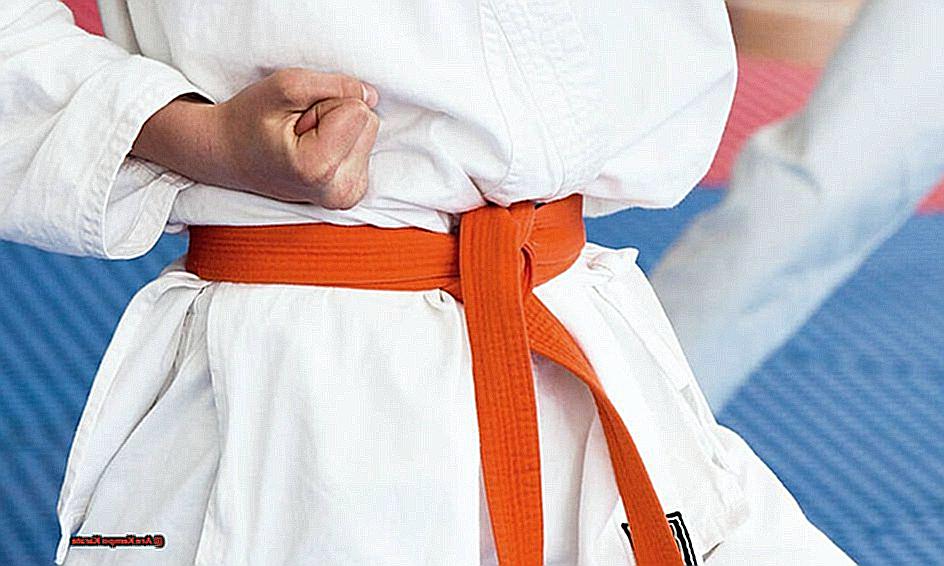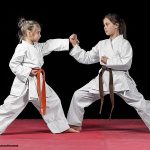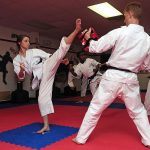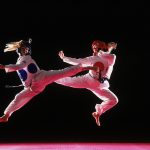Are you seeking a martial art that blends the art of self-defense with physical and mental fortitude?
Look no further than kempo karate. This dynamic form of martial arts originated in Okinawa, Japan and has since spread to every corner of the globe.
With its emphasis on striking, grappling, and joint locks, kempo karate offers a well-rounded and effective style for both self-protection and physical fitness. But it’s not just about combat – kempo karate also prioritizes personal growth and inner strength through its principles of respect, discipline, and perseverance.
In this blog post, we will dive into the rich history and philosophy behind kempo karate, as well as its diverse techniques and benefits. Whether you are a novice or an experienced martial artist looking to expand your repertoire, this post will provide valuable insights into the world of kempo karate.
Let’s begin our journey.
Karate vs. Kempo: How They Differ
Karate and kempo may both be Japanese martial arts, but their origins, techniques, and philosophies set them apart. Karate, originating in Okinawa as a means of self-defense against armed invaders, has been influenced by Chinese martial arts and spread globally.
Kempo, on the other hand, is a hybrid style that blends traditional Japanese karate, Chinese kung fu, and Okinawan martial arts.
Origins:
Karate’s roots lie in Okinawa, where it was developed as a form of self-defense against armed attackers. As it gained popularity in Japan and later the world, it was influenced by Chinese martial arts.
Kempo, however, was founded in Japan but gained recognition in the United States when James Mitose opened his first school in Hawaii. Thus, kempo is considered a more modern martial art than karate.
Techniques:
In karate, striking techniques such as punches, kicks, and elbow strikes are the main focus. In contrast, kempo incorporates joint locks and grappling techniques alongside striking techniques. This is due to its purpose of self-defense against both armed and unarmed attackers.
Additionally, kempo training often includes weapons practice with the bo staff and nunchaku, which are not commonly seen in karate.
Philosophy:
While both martial arts emphasize philosophy, they differ in approach. Karate places great importance on discipline, physical conditioning, and self-improvement through kata training – choreographed sequences of movements simulating a fight against multiple attackers.
On the other hand, kempo also values philosophy but focuses on practical application and mental discipline through rigorous physical training. Students are taught to use their entire body as a weapon and develop mental strength through intense physical training.
Impact on Practice and Techniques:
The differences between karate and kempo have a significant impact on their practices and techniques. Karate practitioners concentrate on developing strong striking techniques and perfecting their kata forms. In contrast, kempo practitioners must also train in grappling and joint locking techniques, as well as weapons practice. This results in a wider range of techniques and self-defense capabilities for kempo practitioners.
Moreover, the philosophies of each martial art also influence their practices and techniques. Karate’s focus on discipline and self-improvement through kata training differs from kempo’s emphasis on practical application and mental discipline through intense physical training. As a result, the training methods for each martial art are also distinct.
Key Differences between Karate and Kempo
Key Differences between Karate and Kempo:
Origin and Influences:
Karate was founded in Okinawa, Japan, while Kempo is a fusion style that combines traditional Japanese karate, Chinese kung fu, and Okinawan martial arts.
The roots of Karate can be traced back to Chinese martial arts, specifically Shaolin kung fu. On the other hand, Kempo has been influenced by both Japanese and Chinese styles.
Training Methods:
The primary focus of Karate training is on striking techniques, including punches, kicks, and knee strikes, with an emphasis on developing speed and power. Training is often repetitive and involves practicing forms or katas to perfect techniques.
Kempo training, however, encompasses a wider range of techniques, including joint locks and grappling techniques. Weapons training, such as the bo staff and nunchaku, is also incorporated. The training is more dynamic and less rigid compared to Karate.
Philosophy:
While both Karate and Kempo emphasize discipline and respect, they differ in their approach to overall well-being. Karate focuses on developing physical and mental strength through rigorous training.
Kempo takes a more holistic approach, focusing on physical, mental, and spiritual development. Practitioners are encouraged to use their skills for self-defense only as a last resort.
Techniques:
Karate primarily utilizes striking techniques with an emphasis on linear movements and powerful punches. In contrast, Kempo incorporates both striking and grappling techniques with circular movements to redirect the opponent’s force.
In Karate, practitioners are taught to strike vital points on the body for maximum impact. In Kempo, joint locks and throws are used in addition to strikes to neutralize an opponent.
Forms:
Kata is an essential aspect of Karate training where practitioners practice a set sequence of movements against imaginary opponents. It helps develop muscle memory and improve technique.
Kempo does not use kata but instead has its own forms that incorporate a wider range of techniques, including joint locks and throws.
Symbols:
The use of symbols is another key difference between Karate and Kempo. While Karate has minimal use of symbols, the dragon is a significant symbol in Kempo, representing power, strength, and wisdom.
In conclusion, although Karate and Kempo share some similarities as they both originated in Japan, they differ significantly in terms of their origins, techniques, training methods, philosophy, and use of symbols.
Conclusion
In conclusion, kempo karate is a dynamic and all-encompassing martial art that embodies physical prowess and mental fortitude.
Originating in Okinawa, Japan, this style has gained global recognition for its well-rounded approach to self-defense and physical fitness. Kempo karate places equal importance on striking, grappling, and joint locks while also instilling valuable principles such as respect, discipline, and perseverance.
Its roots may stem from traditional karate, but kempo sets itself apart through its unique techniques, training methods, philosophy, and symbolism. While traditional karate focuses solely on developing strong striking skills through repetitive training and kata forms, kempo incorporates a wider range of techniques including joint locks and weapons practice.
Moreover, kempo takes a holistic approach to overall well-being by emphasizing the development of one’s physical, mental, and spiritual aspects.






